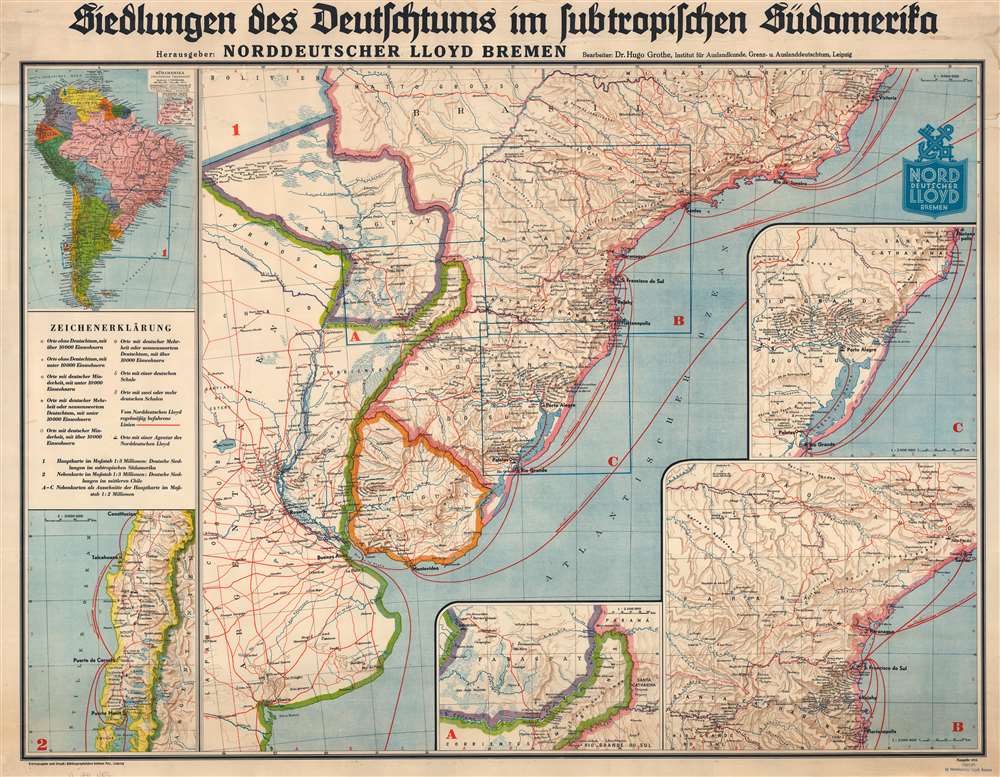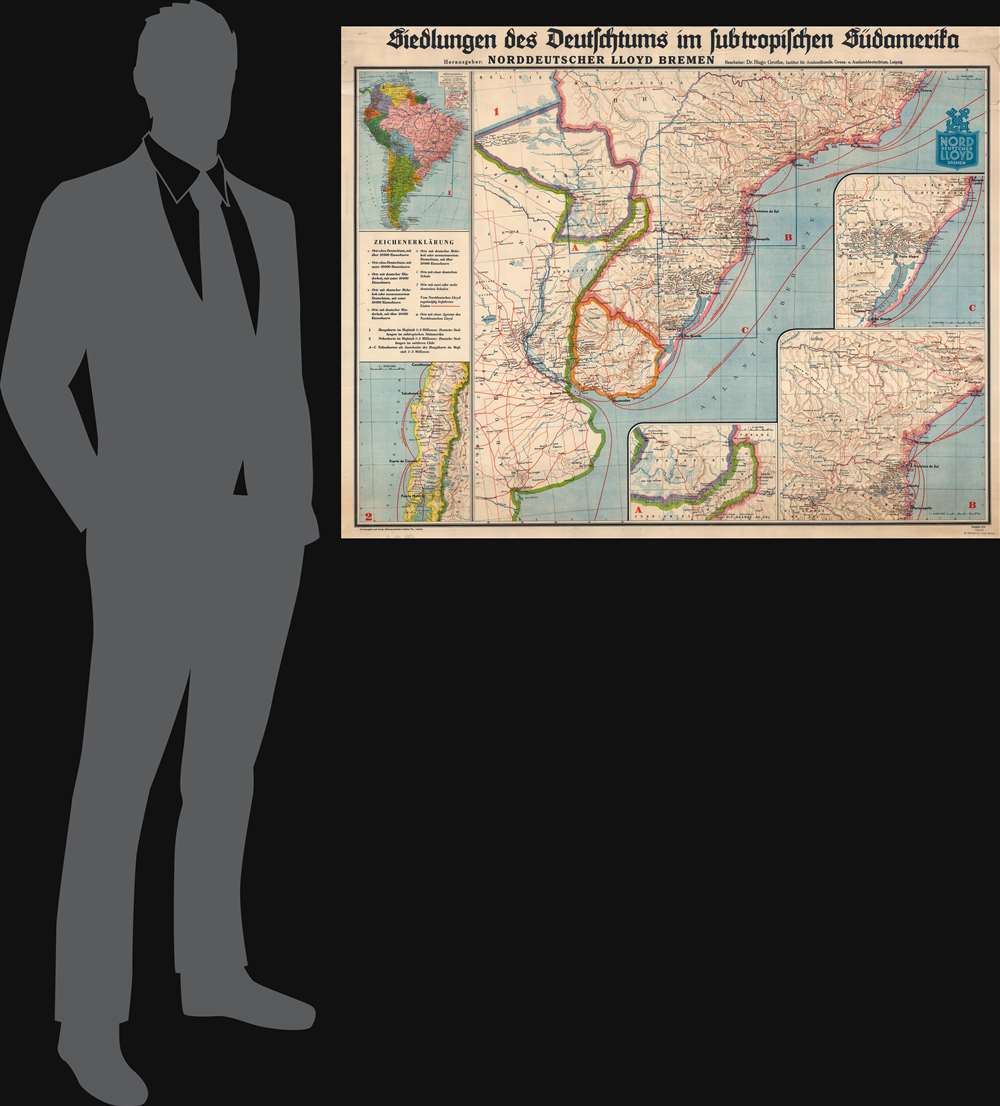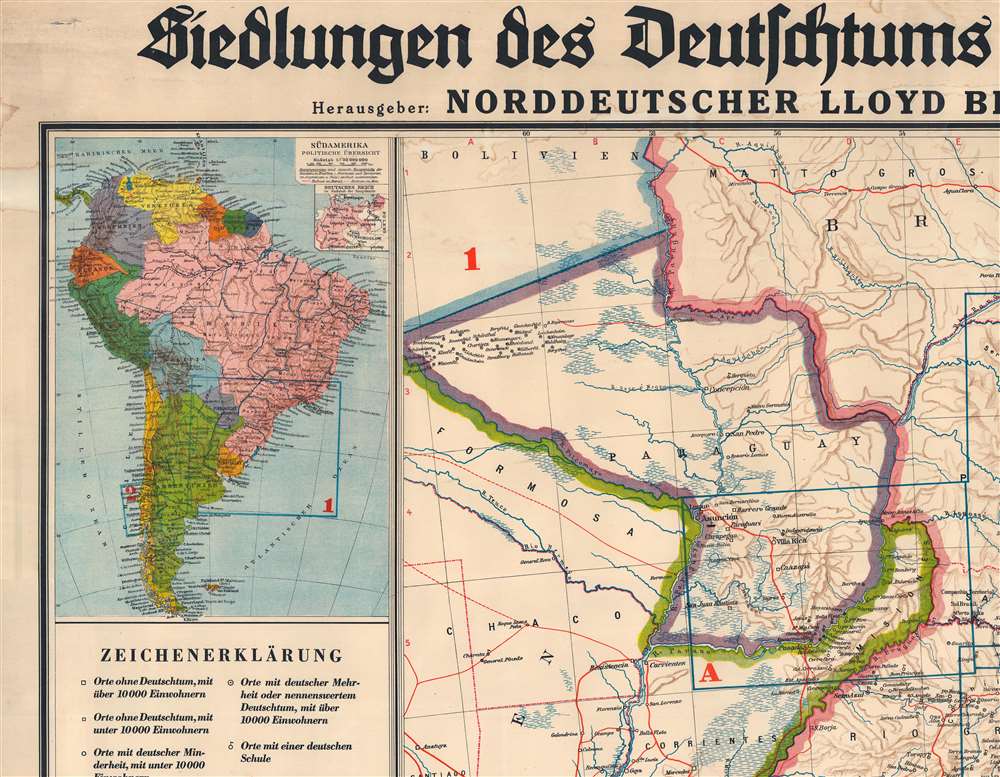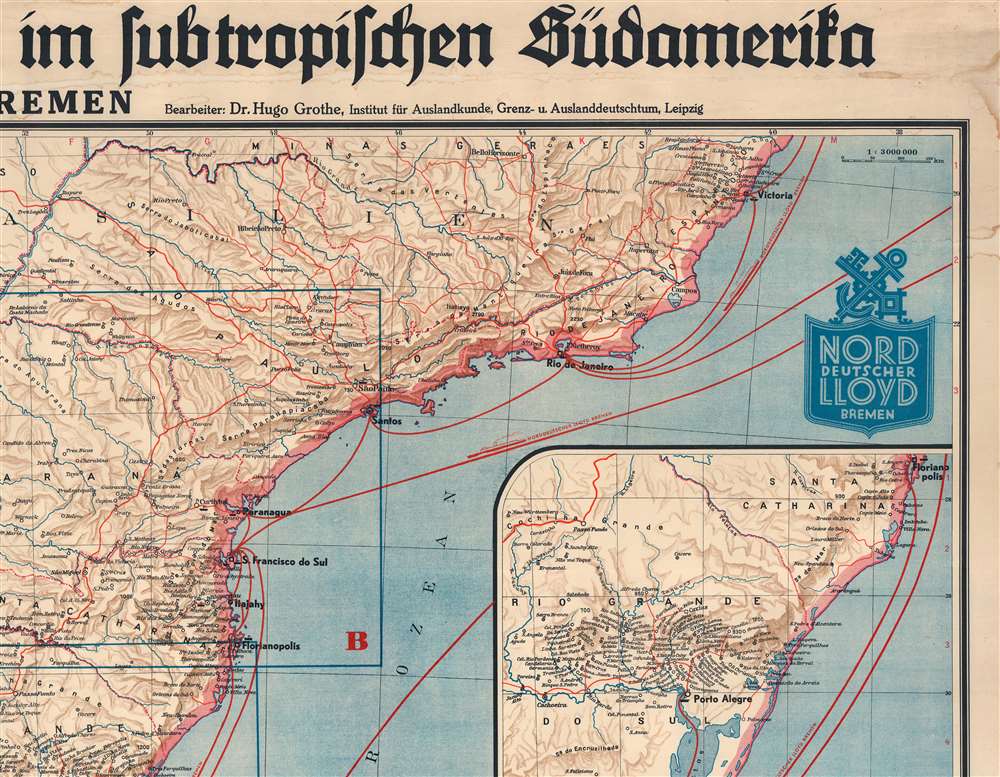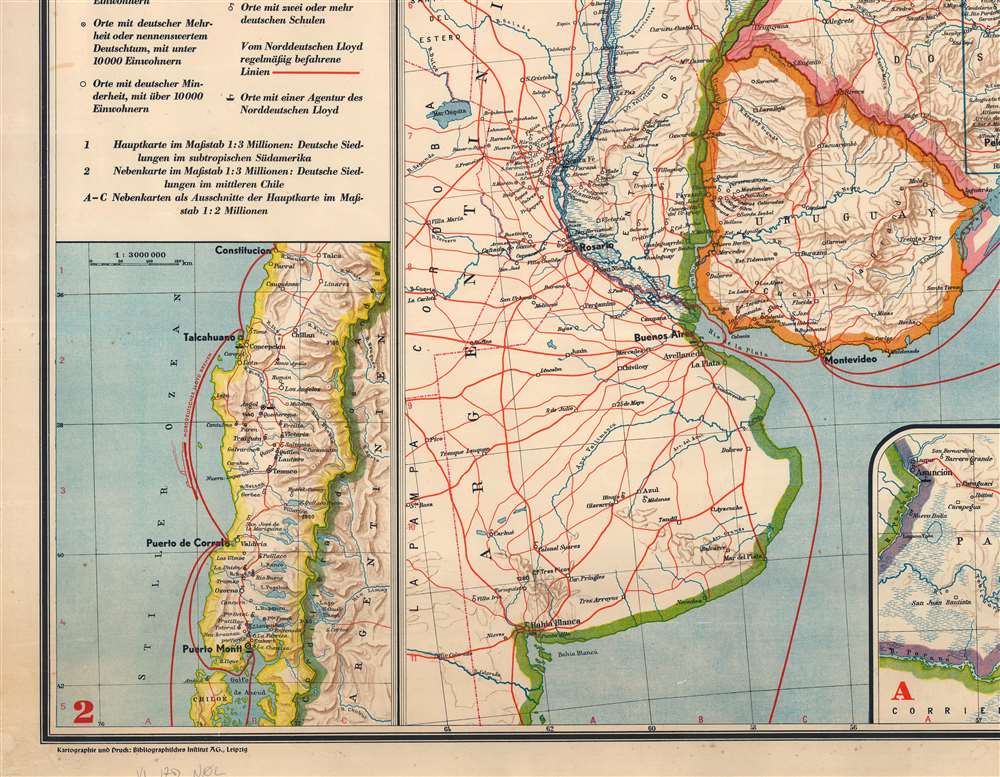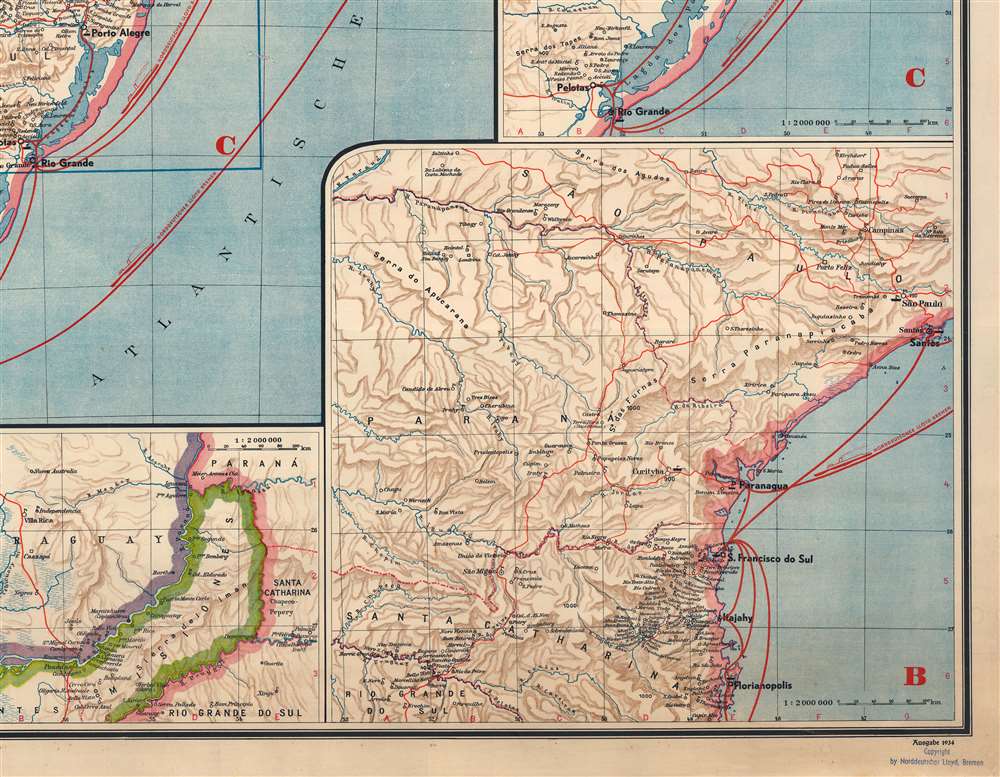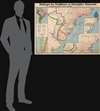This item has been sold, but you can get on the Waitlist to be notified if another example becomes available, or purchase a digital scan.
1934 Norddeutscher Lloyd Map of German Settlements in Southeastern South America
GermanSettlements-lloydbremen-1934$375.00

Title
Siedlungen des Deutschtums im Subtropischen Südamerika.
1934 (dated) 34.75 x 44.75 in (88.265 x 113.665 cm) 1 : 3000000
1934 (dated) 34.75 x 44.75 in (88.265 x 113.665 cm) 1 : 3000000
Description
This is a 1934 Norddeutscher Lloyd Bremen wall map of German settlements in southeastern South America. Coverage extends from Bolivia and the Matto Grosso in Brazil south to Bahia Blanca in Argentina, with a focus on the South American coast. Bold red lines in the Atlantic highlight Norddeutscher Lloyd Bremen's most traveled routes. Stops included Santa Catharina, Paraná, and Rio Grande do Sul, all regions popular with German immigrants. Cities, towns, and villages throughout are identified, with circles marking cities with German populations and squares marking cities without German populations. Little black boat icons appear next to cities where Norddeutscher Lloyd Bremen operated.
Inset Maps
The most general inset, situated in the upper left, illustrates all of South America. Boxes delineate the areas on the large central map (Map 1) and the inset in the lower left (Map 2). Three inset maps occupy the lower right and illustrate parts of the large central map (Map 1). They are identified alphabetically: A, B, and C. Inset A focuses on the region where Paraguay, Argentina, and Brazil meet, and labels both Asunción and Iguazu. Inset B illustrates a portion of the Brazilian coastline from Sao Paulo and Santos to Florianopolis, which includes parts of Paraná and Santa Catharina. Inset C depicts the continuation of Brazilian coast from Florianopolis to Rio Grande and Pelotas, including Porto Alegre and the German settlements near that city. Map 2, in the lower left corner, presents German settlements in south-central Chile from Constitucion to Chiloé Island.German Immigration to South America
While sporadic German immigration to South America happened earlier, it was not until the mid-nineteenth century when large numbers of German immigrants, fleeting the failed Springtime of the Peoples Revolutions (1848) began arriving in Brazil, Argentina, and Chile. Most German immigrants during this era opted to go to the United States, but several hundred thousand emigrated to South America. Germans from every social class settled in these cities and towns, from businessmen and bankers to tradesmen and farmers. It is tempting to treat this entire group of people as homogenous. However, they were individuals and approached their new countries in numerous ways. Some opted to assimilate, marrying into local families and becoming a member of the community. Others held on to their 'Germanness' and created a society that reflected their customs, architecture, and society.Historical Context
Such deutschtum or German diaspora nationalism created this map, in a manner of speaking. The relatively large, culturally German community must have appealed to many people, some looking to vacation outside Germany, others trying to permanently leave. Adolf Hitler was named Chancellor of Germany in 1933 and he and his Nazi Party immediately began their hateful changes to German society. It is likely that some of the travelers on Norddeutscher Lloyd Bremen's ships in 1934 were fleeing this horrific reality.Norddeutscher Lloyd
Norddeutscher Lloyd (February 20, 1857 - September 1, 1970) was a German shipping company. Founded by Hermann Henrich Meier and Eduard Crüsemsann, Norddeutscher Lloyd became one of the most important German shipping companies of the late 19th and early 29th centuries. The company's ships brought hundreds of thousands of steerage passengers to the United States between 1900 and 1914. When this map was made, Norddeutscher Lloyd was in trusteeship, and it would not truly recover until the 1950s.Publication History and Census
This map was edited by Dr. Hugo Grothe and published by Norddeutscher Lloyd Bremen in 1934. We note six examples cataloged in OCLC, all of which are in library collections in Germany.Cartographer
Albert Luis Hugo Grothe (August 15, 1869 - December 28, 1954) was a German geographer, scientist, orientalist, and cultural politician. Grothe's father worked on the Baghdad Railway, which later became an important part of his dissertation 'The Baghdad Railway and the Swabian peasant element in Transcaucasia and Palestine'. Grothe founded the Oriental Society in 1900 in Munich. He dedicated his life to the study of German ethnic groups abroad and the migration of peoples. More by this mapmaker...
Condition
Very good. Mounted on linen. Some edge wear. Light dampstaining.
References
OCLC 917740931, 836291884.

